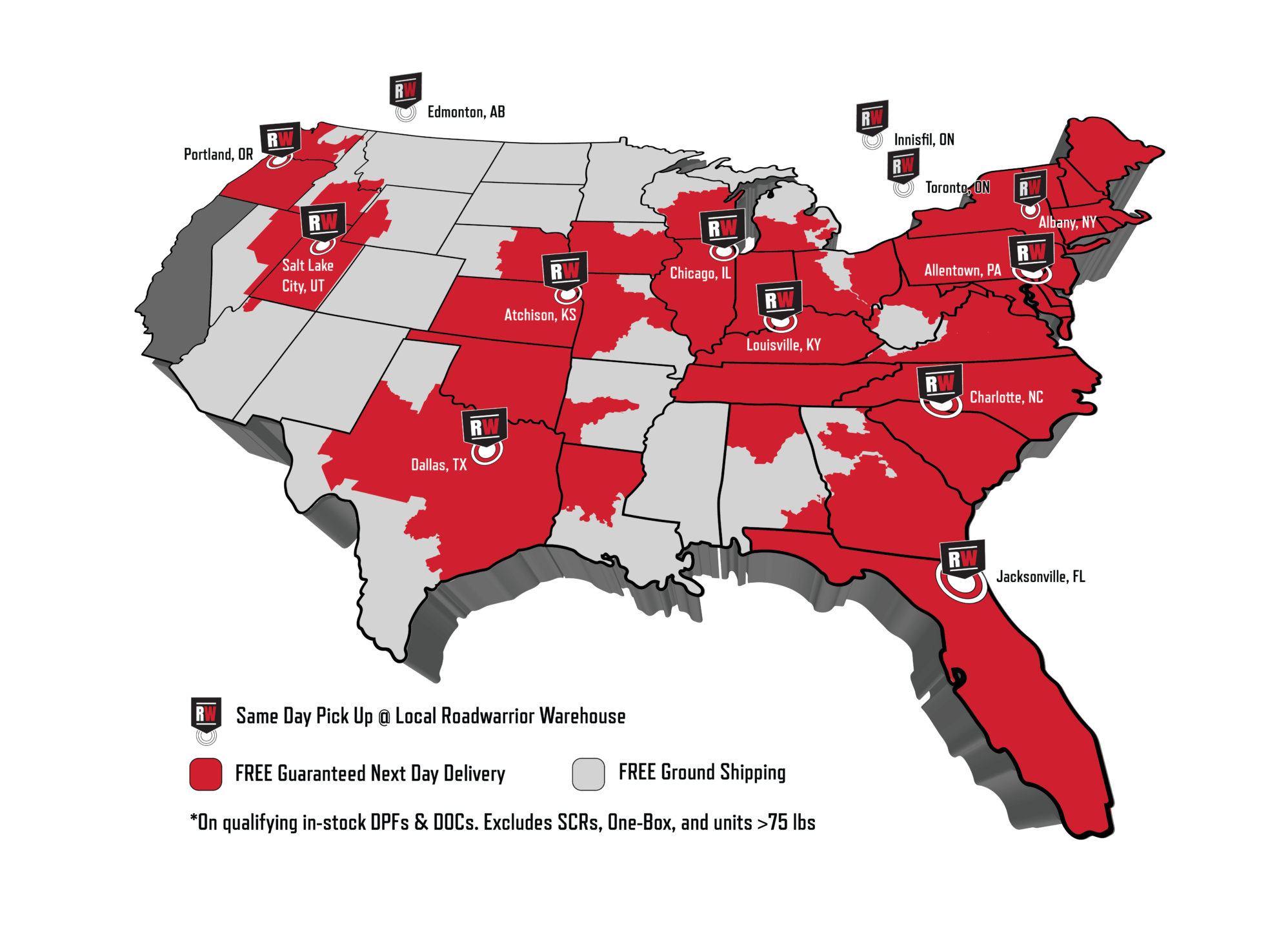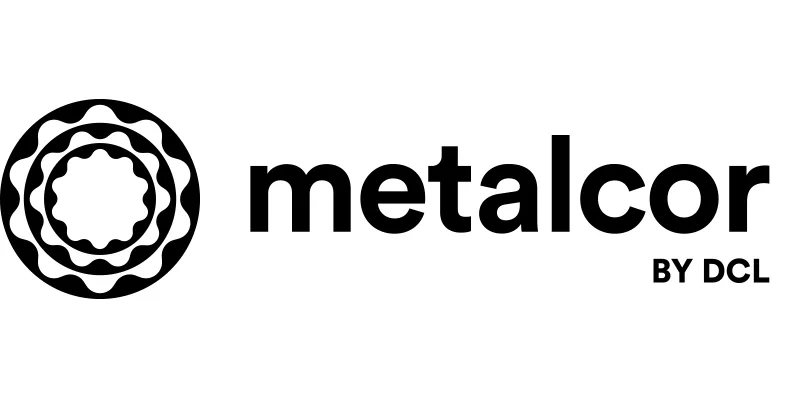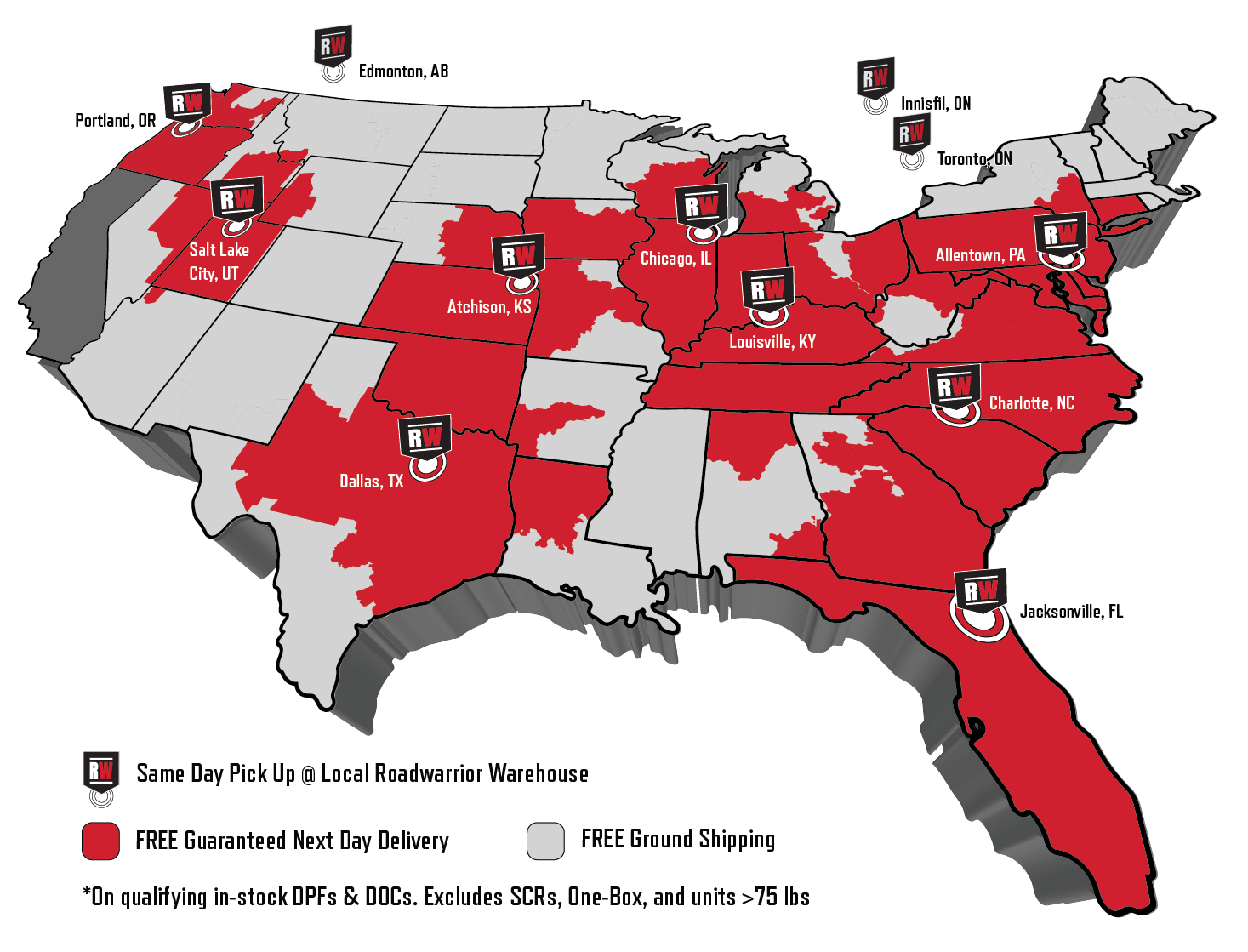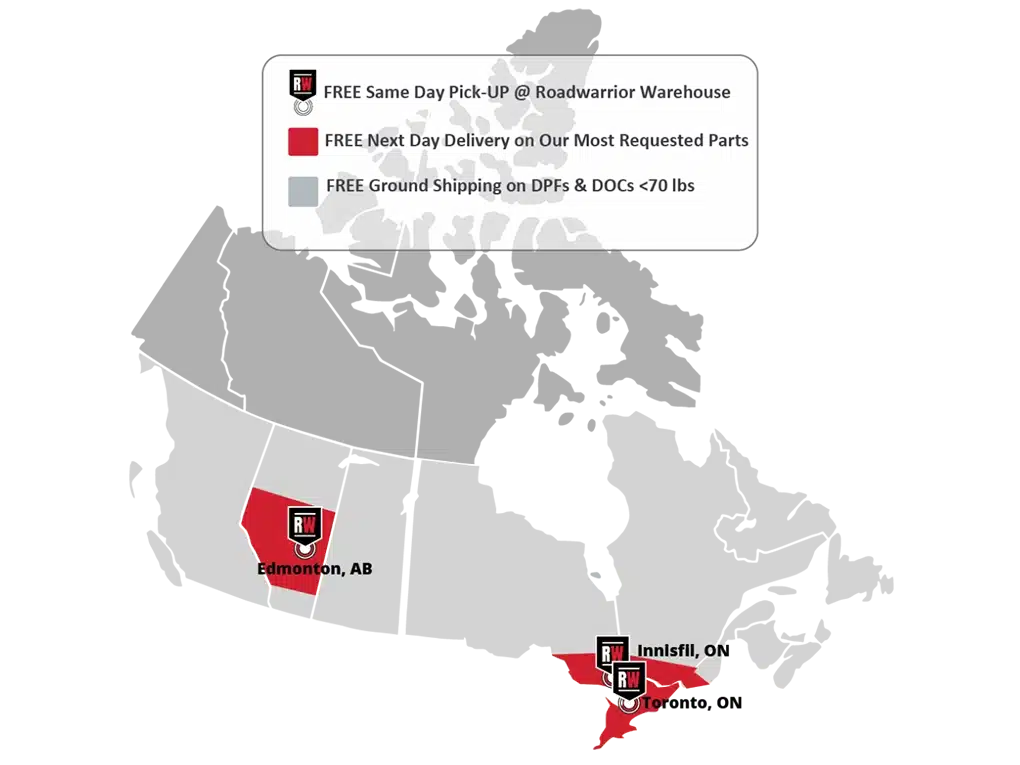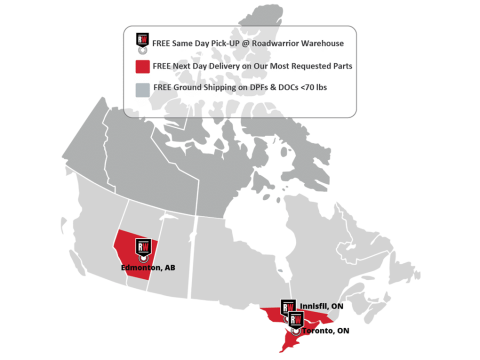Roadwarrior Sales Director Dave Jerman returned to the Heavy-Duty Parts Report (HDPR) podcast for episode 230! He and host Jamie Irvine discussed the electrification of the trucking industry and the role our technology could play. They also explored what the transition to electric trucks could look like, and which truck parts are likely to be adapted first. This included the reasons electric APUs were introduced and how OTR truck drivers can make them more efficient while saving fuel! You can listen to the podcast here or jump down to watch the video version.
What is HDPR?
The Heavy-Duty Parts Report (HDPR) is an informative weekly podcast brought to you by experts in the HD trucking industry. Every week, the host Jamie Irvine interviews well-informed guests regarding new products, tech, systems and methods to help fleets run more smoothly! Roadwarrior’s Dave Jerman previously appeared on episode 177 of the podcast to talk about the scan tool the Diesel Decoder, which we collaborated on with Diesel Laptops. You can watch the video version of the HDPR episode on electrifying the trucking industry here, or scroll down to read the full video transcript below:
Full Interview Transcript
Jamie Irvine:
You’re listening to The Heavy-Duty Parts Report. I’m your host, Jamie Irvine. And this is the show where you get expert advice about heavy-duty parts that keep trucks and trailers on the road longer while lowering cost-per-mile.
We’ve all seen the trends in the commercial trucking industry towards electrification. If you’re a company that is manufacturing components for internal combustion engines, diesel engines, you need to diversify and you need to look for opportunities to be able to change your product mix so that you can be part of this trend towards electrification. And that’s what my guest and their company has actually done!
So, I’d like to introduce Dave Jerman. He’s the Sales Director at Roadwarrior, and Dave is a returning guest. Dave, welcome to The Heavy-Duty Parts Report. So glad to have you back!
Dave Jerman:
Great, thanks Jamie! Thanks for having me back, pleasure to be here!
Jamie Irvine:
So, let’s talk a little bit about electrification. You and your company at Roadwarrior, you see this trend, what is it that you see […] happening specifically related to products that you’re manufacturing?
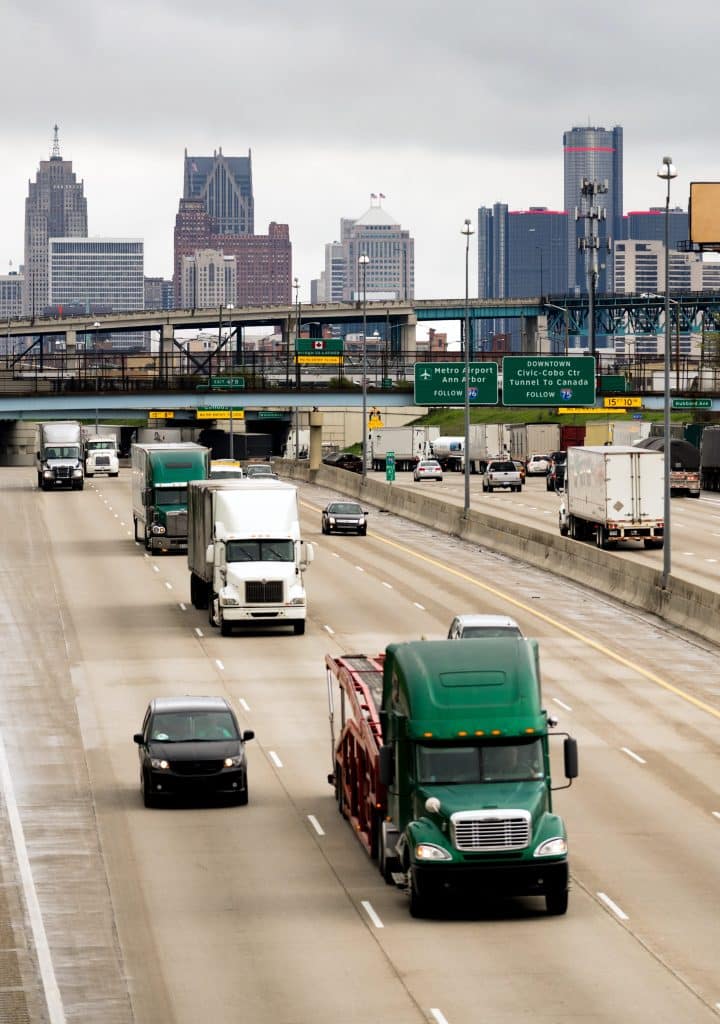
Dave Jerman:
Yes, specifically related to the LightningVolt battery that we developed. Obviously, there’s a lot of anti-idling laws that were out there. So, there’s a lot of auxiliary power units that were initially diesel power to avoid idling the main engine. But in order to reduce greenhouse gases and [meet] emission standards there was a move towards electric APUs.
So, the APU would run on batteries […] so when you’re shutting down the truck, there’d be no idling at all. Certain states like California prohibited idling altogether, whether it was a small diesel APU or the main engine. So, the electric APU became the standard in many of the trucks that were specc’ed out. So, it was the right technology, just paired with the wrong batteries.
[…] With electrification, we saw the need to develop a specific product here to solve a problem. People who’d made the investments in electric APUs […] weren’t getting the power capacity to run the HVAC and accessories for the complete night. And the drivers had to end up idling, which was defeating the purpose.
Jamie Irvine:
Right. And you know, when you talk about the trend towards electrification, I think a lot of people, they just go right to either ‘it’s an internal combustion engine’, or ‘it’s an electric or some hybrid kind of system’. And you don’t think about all the other aspects of electrification. Like there’s electrification of axles, like you said, there’s the electrification of the APUs. So, to me, and I guess I’m curious about your perspective on this, but to me, I just don’t see us flipping a switch. I see the industry moving in kind of like steps and phases to get to a […] zero-emission world. Is that really what you’re seeing as well from your perspective?
Dave Jerman:
Oh, for sure. Being in manufacturing… you can’t start manufacturing all this capacity and just flick a switch and all of a sudden […] get these millions of passenger cars or hundreds of thousands of heavy-duty trucks.
It takes time to develop that infrastructure, not only from switching the manufacturing capabilities and capacity, but also the supply chain has to adapt with that. And also, you know, what nobody’s really talking about is where are we gonna get all this power? Even though you plug it in the wall, and it seems clean, where is that power that you’re getting out coming from? And I think that’s something that really hasn’t been addressed.
So, I think it’s gonna take some time too, you know… We’re already getting brownouts and things of that nature so I think we will get there. There is a lot of innovation, people trying to better the world for everybody and do the right things. It will take time, but I think we will get there!
Jamie Irvine:
Yeah. That’s what I see as well. And I think to a large degree, I think that those intervals and that iteration of technology… in many ways, it’s a good thing, because it gives us an opportunity to adapt. It gives us an opportunity to test different ideas and see which one works the best! With all this change, it presents both challenges and opportunities. And really, I think that’s what you’ve capitalized on with this new technology.
[Interval]
Roadwarrior saw an opportunity. So, can you describe for us the product that you’ve developed and really what, the Genesis of that product was?
Dave Jerman:
Absolutely. Roadwarrior prides itself on being an innovating company as part of the DCL technology group. So, we were the first in the aftermarket to offer catalysts and DPFs in the marketplace as an alternative for our customers. And now with electrification, like we talked about, we want to dip our toe in the water, for lack of a better word.
So, we looked at opportunities since we were really focused on serving the heavy-duty trucking industry. We saw the electric APUs as an electrification movement that we can assist in because the electric APUs are designed to power the sleeper cabs without having to idle the main engine. However, the traditional lead-acid or AGM batteries that are provided with the electric APU don’t have enough capacity to run the power needs of the HVAC system and the accessories all night.
So really the system was not being utilized, because it was paired with the wrong battery. So we were, to the best of my knowledge, not only the first, but the only manufacturer to specifically design and engineer lithium iron battery. Our LightningVolt is a drop-in plug-and-play replacement for electric APU storage batteries.
Jamie Irvine:
Okay. So, in those early model electric APUs, they were just using like a group 31 starting battery? Kind of the same one you would find in a bank of four on the class eight truck? Or what was the battery?
Dave Jerman:
[…] We’re starting to see some options for lithium. But there’s a lot of legacy electric APUs out there that are still today being installed with […] traditional lead-acid or deep-cycle AGM batteries, which is perfect for a starting battery, but not ideal for a storage battery.
Jamie Irvine:
Yeah. Well, I mean, I was just thinking about when I sold batteries […] draining down those batteries, those starting batteries down to nothing and then having to charge ‘em back up that over time… that’s what leads to those batteries just not being able to hold a charge and provide you the power that you want. So yeah, just a situation of like evolving technology and there’s a leg in people moving forward with batteries. That’s great that you took advantage of that. So, what’s the big difference between lead-acid and AGM batteries and lithium?

Dave Jerman:
Just as you mentioned, the lead acids and AGMs don’t like to be deeply discharged over and over. As you do that, you lose capacity and further to that, the system is controlled by voltage. So, you know, a fresh battery when it’s fully charged is above 13 volts, about 13.2, and as a lead-acid or AGM battery starts to lose its state of charge, it kind of goes down on a diagonal. And when it’s about 50% capacity voltages are between say 12.6 to 12.4 volts and around there, and the system, to protect itself, will start to load shed and maybe auto-start the truck. So really, you’ve only used about half of that 100-amp capacity and already you’re starting your truck. So, it kind of defeated the purpose.
The nice thing about lithium technology, it stays above 13.2 volts until it’s almost 95% discharged. So now you’re getting twice the usable power—you’re using almost that total 100-amp hours. So that’s the big difference. You’re essentially getting twice the power and it’ll last much longer, like up to 10 times longer than your lead-acid because it can handle that deep-cycle discharge without hurting.
Jamie Irvine:
When are you recharging these batteries? Is it when the truck’s started and then as they’re driving down the highway, some of that charge from the alternator is being sent back to those batteries, or how does that work?
Dave Jerman:
Yeah. Correctly, the system’s designed that they’re equipped sometimes with an isolator, or without an isolator, to kind of combine both battery banks and separate them. So, what we did is we specifically designed and engineered the battery management system to work with the existing electronics. So, it’ll work with the factory installed alternator. It has enough power to supply the lithiums and the AGMs that work in conjunction together with them seamlessly. And that battery management system… Like I said, what we’ve done differently, is when you take an off-the-shelf lithium, the battery management system won’t be calibrated to work as a plug-and-play and drop-in. So, this is what Roadwarrior’s done differently. We’ve designed it as a drop-in plug-and-play install to work with the existing electronics and alternator system.
Jamie Irvine:
You know, being the first to market with something is always bold. What has made this kind of a hard problem for others to solve? Like why is that challenging and how were you able to solve those challenges?
Dave Jerman:
I think in taking the time to test it. So, it’s easy to think about something but we have to test and give proof of concept. So, we’ve been working on this for a number of years. We approached some customers of fleets that have been great and allowed us to access their trucks, to test them.
It’s that kind of first, second, third, fourth generation to make that investment and then kind of tweak those settings and engineering that battery management system to work seamlessly. Because the electronics of the truck is very sophisticated today. So, you can’t just drop in anything, and assume it’s gonna work. You’re gonna have interruptions and things happening or not communicating properly or charging properly… things of that nature. So, we’ve kind of had a learning curve. We’ve done a lot of in-lab testing and then real-world testing, working with a variety of fleets that we were very happy to cooperate with and we appreciated their support!
Jamie Irvine:
Yeah. It’s so essential to get that real world testing done so that you can really see what it’s gonna do. And that gives you the opportunity to talk about economic impact! So, when someone is using like a lead-acid or an AGM battery and they’re running those batteries down and those batteries die… I mean obviously the replacement cost of those batteries is going to be what it is. And it can be a few hundred dollars up until over a thousand dollars. When you put these ones in, I’m assuming maybe the purchase price might be a little higher? But on the back end, the person’s gonna save a lot of money because they’re not gonna have to replace the batteries as often. Is that the primary source of savings when you look at a little bit longer timeline?

Dave Jerman:
Actually, it’s twofold. It’s the replacement… So yeah, I’d say the traditional lead-acids and AGMs have to be replaced every 1–2 years. The lithiums will last many times longer than that, so the replacement intervals will be lower. But further to that, it’s because you’re getting twice the usable power. You’re gonna get a return on investment on fuel savings alone!
So, we had one fleet who says, ‘oh, we have an electric APU. My driver doesn’t idle.’ We said, we’re gonna put a logging system on there. And we’ll let him know he has lithiums and see what happens.’ And when we talked to the driver, he had what we call battery anxiety. He knew that he didn’t have enough power to run them. So, what he would do—he’d be running the truck for 4–6 hours every day, because he knew he wouldn’t make it. And then he’d just turn on his electric APU maybe at night to run his heating and cooling.
So, he was defeating the purpose. We told him you got the lithiums now, run them! And then what we found was they saved about 800 hours of idling in just about three to four months. So that’s right there at today’s fuel prices, that’s over $3,000. So, you’ll get a return on investment in this scenario in less than three months, which is crazy. It becomes a no brainer.
Jamie Irvine:
Oh, that’s so great. Because many times, you know, when I was selling parts, I’m trying to convince fleets like, you know, spend three times as much on spring brakes or on brake material, spend three times as much upfront and over four years you’ll get the money back.
And it’s almost like it was such a long interval that it was hard. And it’s not that the numbers weren’t real, but it’s kind of hard to like… you know… you don’t get that immediate payoff. But with this, that immediate payoff, that’s fantastic. And then in the long term, they get the additional savings of not having to replace those batteries as often, which also it’s not just the replacement cost, as we all know, they also have to pay somebody to switch ‘em out.
Dave Jerman:
Oh, 100%. So, like I said, not only a replacement, but it’s the fuel savings. And then it’s what we’re trying to do. It’s environmental, reducing greenhouse gases not to mention the wear and tear on the engine, the amount of hours that you’re running, the aftertreatment system doesn’t like idling. […] The ROI comes from a lot of places. Not just one thing where you’re seeing just a replacement cost. You’re getting benefits in many different areas. And you know, we didn’t time the price of fuel to be right. So, us entering the market when the fuel prices are skyrocketing, […] the ROI was a lot easier to justify or the payback was a lot shorter than you would typically see when fuel prices were lower.
Jamie Irvine:
Right. Well, you have to be good to be lucky and lucky to be good and you guys are good and lucky. So that’s awesome. You know, your expertise when you were on the show before we were always talking about diesel emission systems and engines. Let’s talk a little bit about that because I think that there is some misunderstanding. Or maybe some leftover bad, not bad habits, leftover old habits from some of the older technology with engines. Like as far as what I’ve been learning lately, these new engines, they don’t like to idle. And certainly, the diesel emission system doesn’t like idling.
So, let’s talk a little bit about that because that, that’s also a significant part of all of this. If we could reduce idling, it does impact the engine and the diesel emission system. And as we all know, that’s a pretty costly system to maintain and repair.
Dave Jerman:
For sure. That’s why it was a perfect fit. Not only does it bode well for the savings, but the wear and tear on the engine. And because we saw the aftertreatment system—DPFs and SCRs and the aftertreatment system as a whole doesn’t like idling. When you’re idling, you’re just loading and straining the system and reducing the shelf life and increasing the maintenance intervals. So that’s as if now you’re damaging it altogether.
So, even from a warranty perspective…For OEMs, anything over 20% idle could be considered excessive idling, and they could actually even deny your warranty. I’ve been at a few seminars where some manufacturers said, if we go into your ECM and see you’ve been idling over 20%, this gives them grounds for denial due to excessive idling. So, these are the types of things that, you know, truck owners and fleet operators have to be aware of. That you know, idling is not only bad for the environment. It’s bad for your pocketbook and the overall […] maintenance costs and costs per mile for keeping that truck on the road.
Jamie Irvine:
Right. And if by using this new battery system with your EAPU, and then if you could even eliminate like one DPF cleaning a year or something like that, like that’s also money in the bank. So, like, no matter how you look at it, this is good, good, good, good.
Dave Jerman:
Oh, that’s what I mean. It’d be so hard to put a number on the maintenance cost or the wear-and-tear side of things that that’d be very hard to quantify! So those are definitely benefits that you don’t have to explain to any mechanic or service manager that idling is bad for your engine. So anytime you can reduce idling, people’s ears will perk up. If I could reduce idling, I’m saving money, I’m saving fuel. It’s better for the environment and it’s gonna reduce my maintenance interval. So, that becomes a much bigger conversation. […]
And not to mention the batteries are half the weight as well—they’re lighter. So, there’s a lot of added benefits that you get. So even reducing weight on a truck! People always wanna put weight towards carrying freight, not towards the vehicle, so that’s another smaller benefit as well. They’re half the weight of the lead-acids!
Jamie Irvine:
So, you can literally be a superhero by buying these batteries because you can save the environment, you can lower idling costs and wear-and-tear. You can reduce the fuel consumption. You can decrease the weight on the truck. And then on top of that, you can get better performance out of your batteries for the driver. So, your driver satisfaction is gonna go up! So be a superhero, head over to roadwarrior-inc.com and check out their new products. They’ve got distributors and they’ve got a great platform for you to be able to buy their product! So, thank you Dave so much for coming on the show and sharing with us. This is an exciting new product. I think it’s awesome, really excited to see how you guys do in the marketplace with it. I think you’re gonna be really successful!
Dave Jerman:
Yeah. Thanks again for having me back and looking forward to talking to you again down the road when we have something else that, you know… need drives innovation. So that’s what we’re here to do! To try to help solve problems and give solutions to our customers in the marketplace!

